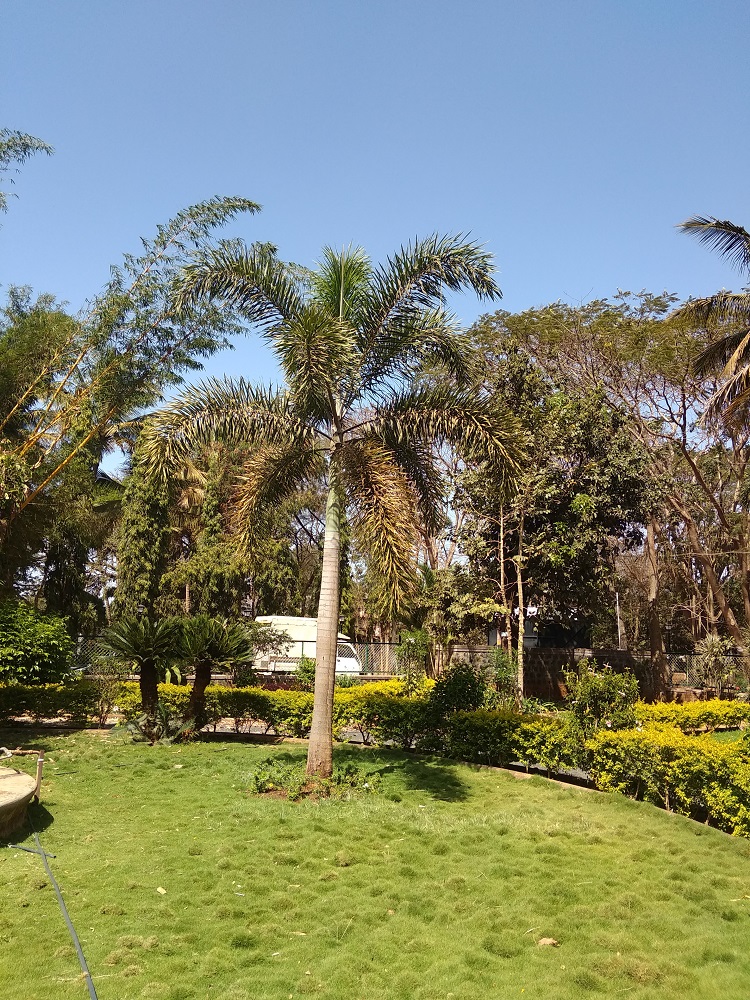wodyetia palm - foxtail palm

Wodyetia bifurcata
Summary
Scientific Classification
Kingdom: Plantae
Division: Magnoliophyta
Class: Monocotyldonae
Order: Arecales
Family: Arecaceae
Genus: Wodyetia
Species: W.bifurcata
Scientific Name: Wodyetia bifurcata.
Common names
English : Wodyetia palm, Foxtail palm.
Discription
- Habit and Habitat: Wodyetia bifurcata is a canopy tree that grows in open forests and scrublands on gravel hill tops amongst rocks and enormous granite boulders on sandy, granitic soils.Wodyetia bifurcata is a very attractive monoecious, thornless, palm with long plumose leaves (hence the name ‘Foxtail’) It has one of the most spectacular foliage displays of all palms.Foxtail palm is thornless and has a slender, closely ringed bottle shaped to columnar trunk that grows up to 30 ft tall.Trunk: Solitary, slender, 10-20 m tall, 20-25 cm in diameter, bottle shaped, slightly swollen on the median part, smooth, with a grey to almost white colour, closely ringed with dark trace of the junction of the fallen leaves.
- Distribution: IUCN’s red list of threatened species .Endemic to a small area on Cape Melville in the Cape York Peninsula, north Queensland.(Australia) It is a very popular ornamental palm cultivated worldwide in tropics and sub-tropics.oxtail palm is native to Australia.Altitude range: between 50 and 400 metres above sea level.
- Morphology:
Leaf: : The pale green arching fronds have leaflets that radiate out at all angles from the leaf stem, thus appearing like a bottlebrush or the tail of a fox. The mature tree has a canopy of 8-10 leaves, each with the characteristic foxtail or bottlebrush appearance, and a crown of leaves 15-20 ft across.
Inflorescence: Inflorescence pendulous, to 1 m, densely branched to four orders toward the base and one or two orders at the tip, with separate, white to yellowish staminate and pistillate flowers.
Flowers: It bears white blossoms of both sexes at the base of its crown, and a single palm is capable of producing fertile seeds.
Androecium: Stamens 60-71, filaments and stylodes lacking scales.Male flowers with sepals 3, c. 5-6 mm long, cream-green; petals 3, c. 10 mm long, cream-green; stamens 58-72 per flower.
Gynoecium: ovary, style and stigma always well developed but the ovules are absent in the male flowers. Female flowers with sepals 3, 6-7 x 5-7 mm, green; petals 3, 9-11 x 6-8 mm, green; c. 3-6 staminodes present; stigma 5 mm long spreading.
Fruit: Fruits clustered, ripening from green to orange-red berries, about 5 cm long.
Seeds: seeds terete,seed shell covered with wavy,slightly depressed,longitudinally tending fibrous lines,some forking.
Flowering and Fruiting time: Mature fruit is present in October-December, open flowers are likely to be found in DecemberFebruary. Seed germinates in 2-3 months, coinciding with the wet season, but sporadic germination continues for at least 14 months. - Propagation: By seed.
- Importance: Wodyetia bifurcata (Foxtail Palm) A hardy, slender, tall and compact growing Australian native Palm perfect for lining driveways, fence lines and for creating a small but striking top canopy in tropical gardens. The foxtail palm is self-cleaning, with bright, feathery foliage.
- Location: anath manohar garden.
 Trees of GSS Project supported by Makerspace Belgaum Website concept and designe by
Trees of GSS Project supported by Makerspace Belgaum Website concept and designe by